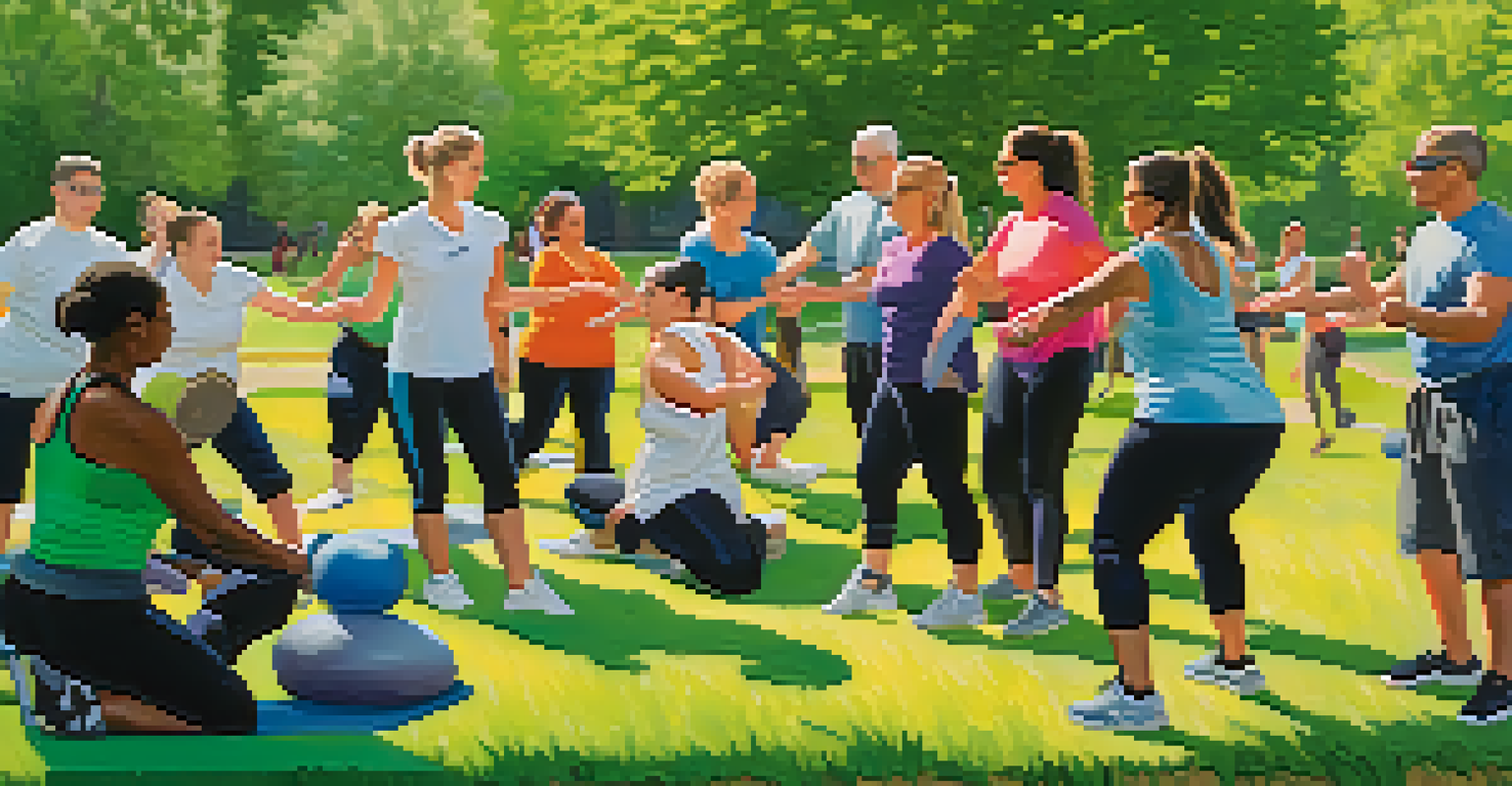Self Defense for Individuals with Limited Mobility: Techniques

Understanding Self Defense for Limited Mobility
Self-defense is a fundamental right for everyone, including individuals with limited mobility. The techniques and strategies may differ, but the goal remains the same: to protect oneself effectively. Understanding your unique abilities and limitations is key to developing a self-defense approach that works for you.
The greatest weapon against stress is our ability to choose one thought over another.
Limited mobility can stem from various conditions, and it's essential to recognize that even small movements can be powerful. By focusing on leverage, body mechanics, and awareness, individuals can develop effective responses in threatening situations. Self-defense isn't just about physical strength; it's about using your environment and skills to your advantage.
Additionally, mental preparation plays a crucial role in self-defense. Being aware of potential threats and knowing how to react can boost confidence. This mindset, combined with tailored techniques, empowers individuals with limited mobility to feel more secure in their surroundings.
Essential Techniques: Using Your Environment
One effective strategy for self-defense is utilizing your environment to create barriers or tools. For instance, a cane or walker can serve as an extension of your reach, providing both distance and leverage against an aggressor. It's all about thinking creatively about the objects around you.

In a situation where you feel threatened, consider positioning yourself near obstacles like furniture or walls. These can act as shields, helping you to maintain distance from an attacker. Sometimes, simply putting something between you and a potential threat can provide the opportunity needed to escape.
Target Vulnerable Areas
Knowing where to strike, such as the eyes or throat, can provide crucial advantages in self-defense situations.
Lastly, always be aware of your surroundings. Keeping an eye on exits, potential hazards, and nearby people can inform your decisions. This situational awareness not only helps you identify escape routes but also enhances your ability to respond effectively if necessary.
Focus on Targeting Vulnerable Areas
When it comes to self-defense, knowing where to strike can make a significant difference. Targeting vulnerable areas of the body, such as the eyes, throat, or groin, can give you a crucial advantage. Even with limited mobility, effective targeting can disrupt an attacker's focus and provide a chance to escape.
Self-defense is not just about physical strength; it's about using your mind, your awareness, and your environment to protect yourself.
Using quick, decisive movements can maximize your impact. For instance, a swift jab to the eyes can momentarily incapacitate an aggressor, giving you precious seconds to move away. Remember, the objective is to create distance and seek safety, not to engage in prolonged confrontation.
Practicing these techniques can build your confidence and help you react instinctively in a stressful situation. Role-playing scenarios with a trusted friend or instructor can provide valuable experience in applying these techniques effectively.
Leveraging Body Weight and Leverage
Understanding how to use your body weight can be a game-changer in self-defense. Even if your mobility is limited, utilizing your weight strategically can help you maintain balance and control during an encounter. Techniques such as pivoting or shifting your weight can provide stability and power.
For example, if you find yourself in close quarters, using your body to push against an attacker can create space. Leaning your weight into a strike can amplify its effectiveness, making your movements more impactful. This principle of leverage can help you defend yourself without the need for excessive physical strength.
Build a Support Network
Creating a network of friends and community support can enhance safety and confidence in self-defense practices.
Moreover, practicing these movements can enhance your muscle memory, enabling you to react more naturally in a real-life situation. The more familiar you become with your body mechanics, the more equipped you'll feel to handle unexpected confrontations.
Mental Preparedness: Confidence and Awareness
Mental preparedness is just as important as physical techniques in self-defense. Cultivating a mindset of confidence and awareness can significantly enhance your ability to respond to threats. Remember, the more you practice self-defense techniques, the more instinctual they become.
Visualizing potential scenarios can also prepare your mind for real-life situations. By imagining how you would react in various encounters, you can reduce anxiety and increase your readiness. This mental rehearsal can make a world of difference when faced with unexpected challenges.
Additionally, consider joining a self-defense class designed specifically for individuals with limited mobility. These classes not only teach techniques but also foster confidence and community support, making the learning process enjoyable and empowering.
Building a Support Network
Creating a support network can be a crucial part of your self-defense strategy. Surrounding yourself with friends, family, or local groups can provide emotional support and practical assistance in times of need. Sharing your self-defense knowledge with them can also enhance your safety.
Engaging in community discussions about safety can help raise awareness of accessibility issues. By advocating for better resources and training for individuals with limited mobility, you contribute to a safer environment for everyone. This collaboration can also lead to valuable friendships and additional support.
Self-Defense for Limited Mobility
Individuals with limited mobility can effectively protect themselves by leveraging their unique abilities and surroundings.
Moreover, having a trusted ally can provide reassurance during self-defense practice or in unfamiliar situations. Knowing that someone has your back can boost your confidence and empower you to face challenges head-on.
Resources for Continued Learning and Practice
Accessing resources for self-defense tailored to individuals with limited mobility is essential for ongoing learning. Look for instructional videos, books, or local classes that focus on adaptive techniques. The more you educate yourself, the more equipped you'll feel to handle potential threats.
Online platforms also offer a wealth of information. YouTube channels, blogs, and forums dedicated to self-defense can provide insights and community support. Engaging with others who share similar experiences can enrich your understanding and motivate you to practice regularly.

Finally, consider reaching out to organizations that specialize in self-defense for individuals with disabilities. They can offer workshops, training sessions, and valuable resources to help you continue your journey toward empowerment and safety.